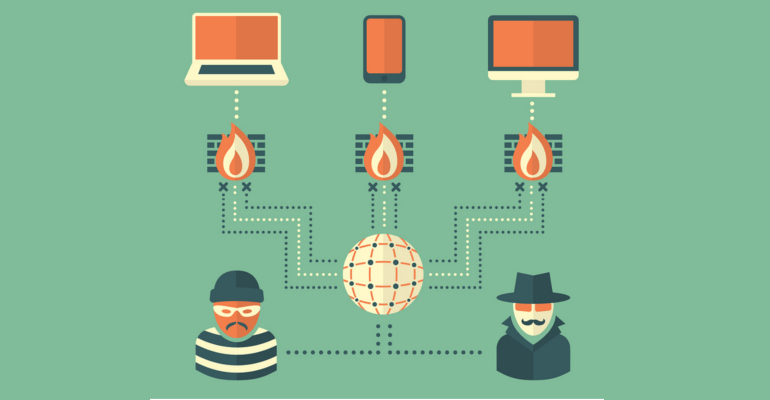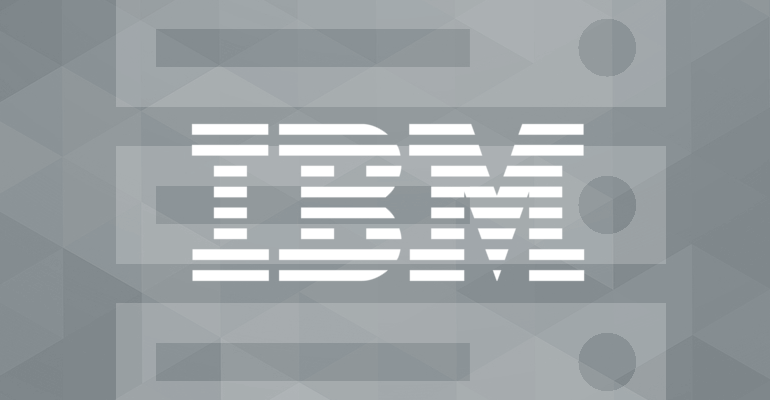A firewall is your business’s border control for data. It’s there to let the good connections through, and stop the nasty ones in their tracks. When it’s running efficiently, you shouldn’t notice it at all. When there are flaws, or bugs, your business is vulnerable to data theft and hackers. In other words, firewalls prevent unauthorized access.
Hardware Firewalls
On a smaller scale, hardware firewalls are like your home router. Home routers share an IP address to all of the computers on your network and when random traffic from the internet arrives at your router, it doesn’t know which of the computers on its network to forward it to—it ignores the request and discards the traffic. This blocks incoming requests from reaching any individual computers.
One of the techniques that advanced hardware firewalls use is called packet filtering. This is a technology that checks the header of a packet to determine where it’s coming from and where it’s going. This data is then compared to a set of default or personalized rules to check whether the packet should be forwarded or discarded.
Hardware firewalls are great for businesses that want a security solution that protects many systems at the same time. The main drawback is that these devices can be expensive and hard to setup, and also require monitoring and regular updates. If you have an I.T. department or Managed Service Provider, they will be able to manage this for you.
Cheaper solutions such as home routers and basic network switches suffer from limitations. Often, vulnerabilities will go unfixed by manufacturers, effectively opening a wide door between your computers and the internet. In recent years, products from ASUS, Netgear, and Fritz!Box have suffered from bugs that enable remote attacks.
Software Firewalls
Software firewalls are a good solution for home users and small businesses which have a single broadband connection. Software firewalls are installed on computers, laptops, and servers. Even if your business is protected by a hardware firewall, it’s recommended to use software as well. If a device is taken outside of the network, and used at an airport for example, they are no longer protected by a hardwire firewall and will be vulnerable. A software firewall will stay with the device, keeping it protected. Updates are often delivered automatically, and these programs are easy to manage and set up.
By using software firewalls alone, you are only protecting each individual workstation with no backstop in the event of a cyber-attack. Software firewalls work in tandem with hardware firewalls to protect your business and data from any kind of attack. With both technologies set up and maintained correctly it’s extremely unlikely that you will have issues with infiltration of any kind.
Don’t Rely On Basic
Most operating systems come with simple software firewalls. This is not the same as using state of the art third-party software, which will provide comprehensive protection. Basic OS firewalls will not be updated as regularly as third-party software, nor will they have multiple security features and the ability to be thoroughly configured. As mentioned in previous blogs, updates are key for keeping your business safe from attack.
We recommend Peplink for your network solutions. Across the board, their products are up to date with every current technology. They have solutions for businesses sized from a handful of users to 20,000+. As standard, their models provide bandwidth usage monitoring and web blocking, in addition to QoS for VoIP and E-Commerce. This technology “can detect VoIP traffic and assign it the highest priority, giving you crystal-clear calls.”
Sources:
Router vulnerabilities:
PCWorld
http://www.pcworld.com/article/2057260/vulnerabilities-in-some-netgear-router-and-nas-products-open-door-to-remote-attacks.html
CNET
http://www.cnet.com/news/asus-router-vulnerabilities-go-unfixed-despite-reports/
Insinuator
https://www.insinuator.net/2014/03/how-to-own-a-router-fritzbox-avm-vulnerability-analysis/
Products:
Peplink
http://www.peplink.com/products/balance/model-comparison/




